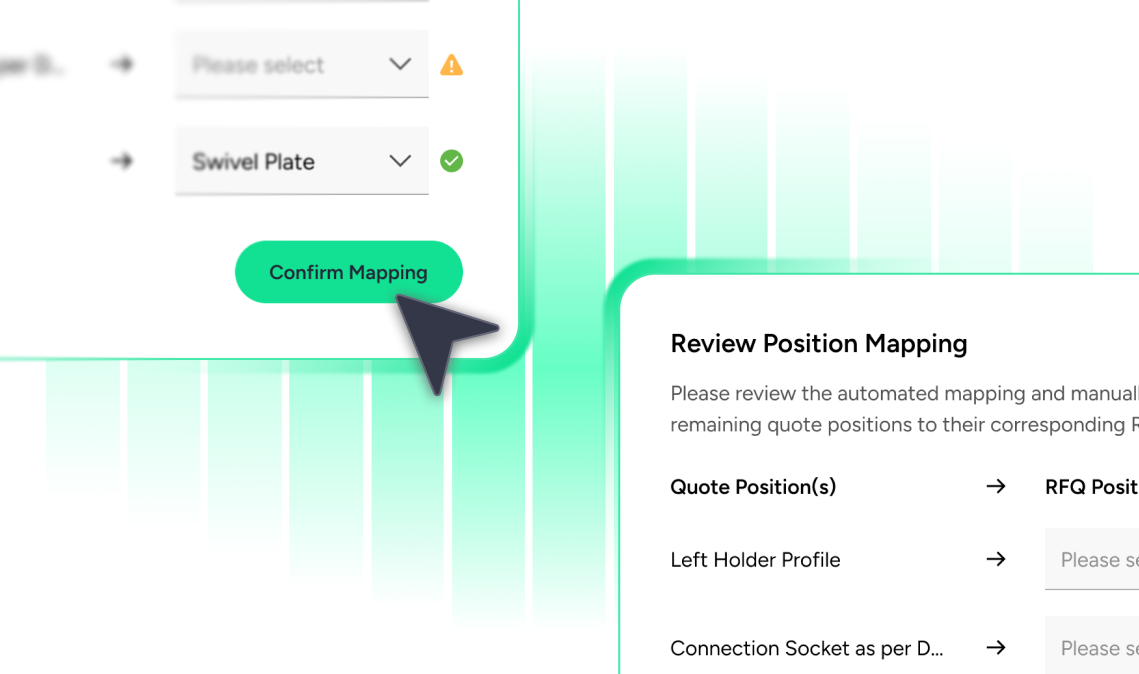Why Real-Time Matters
Whether it's batch production or one-off parts, speed and reliability are now essential. Customers expect faster delivery times, broader customization and accurate lead times. Traditional RFQ processes, often stretching over days or weeks, are increasingly becoming a bottleneck.
A growing number of companies are turning to digital procurement platforms that enable real-time matching. Instead of back-and-forth emails and manual comparisons, the entire process from inquiry to supplier selection can be automated and streamlined. This reduces coordination efforts and increases transparency for both sides of the market.
What Changes for Buyers
Digital sourcing platforms are fundamentally changing the role of technical procurement. Instead of manually collecting quotes, making phone calls, or managing follow-ups, modern tools enable structured, data-driven and time-efficient supplier discovery.
This translates into:
- Technology and capacity transparency in real time
Buyers get immediate visibility into which suppliers offer the required processes, materials and capacities. - Standardized inquiries instead of custom coordination
CAD files, technical specifications and drawings can be uploaded and processed directly reducing errors and improving comparability. - Informed decisions based on clear criteria
Digital matching systems weigh not only pricing but also lead times, industry experience, technical specialization and location. - Greater comparability in offer evaluation
Standardized formats allow buyers to analyze offers more efficiently across both technical and commercial dimensions supporting data-driven decisions.
Many platforms also offer built-in supplier ratings and feedback systems. This makes it easier to assess the reliability of suppliers based on past projects. Additionally, standardized inquiry templates and audit trails help meet internal compliance requirements.
In a volatile and time-sensitive environment, the ability to source quickly, reliably and transparently becomes a critical competitive factor for procurement teams.
What Suppliers Stand to Gain
Suppliers are also seeing a shift in how they collaborate with customers. Inquiries no longer arrive solely via phone or email, but increasingly through digital and standardized platforms. This brings new expectations but above all, new opportunities.
Key benefits include:
- Targeted inquiries instead of scattershot requests
Suppliers receive only those requests that match their machine park, process capabilities and materials, reducing quoting efforts and increasing conversion rates. - Improved planning through digital capacity management
Suppliers who manage their availability digitally can respond to short-term inquiries without overloading internal operations particularly helpful for small and mid-sized series. - Access to new customer segments
Digital platforms broaden market visibility. Many suppliers report gaining repeat business from new customers they would not have reached otherwise. - Focus on qualified leads instead of routine quoting
With inquiries already pre-qualified, quoting efforts can be more strategically directed, boosting efficiency and profitability.
Standardized inquiry formats also improve technical communication. From the very first contact, specifications and requirements are clearly documented minimizing misunderstandings and saving time.
The result: Suppliers benefit from more efficient processes, better capacity utilization and direct access to relevant projects without increasing administrative workload.






